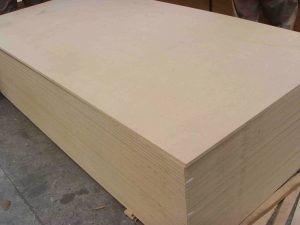When it comes to the cost of plywood formwork, wood veneer faced varieties are the least expensive. Compared to steel formwork, aluminum formwork is more affordable, but both types of plywood are strong and flexible. Read on to learn more about the benefits and drawbacks of each material. Also, check out this quick comparison between aluminum formwork and plywood formwork. Here’s a closer look at both.
Film faced plywood
When choosing a plywood formwork, durability is a major consideration. If you plan to reuse the plywood multiple times, it should be a durable construction, such as a medium-density overlaid (MDO) panel. Its MDO is better than its surface film, and it minimizes the transfer of wood grain from the plywood to the concrete. A wood veneer faced plywood formwork is the most affordable type, with the least expensive cost.
This type of plywood is a great choice for exterior applications, as it has a higher bending strength. Shuttering plywood is the most affordable type of plywood formwork, but will have poor-quality face veneers and voids in the core. Wood veneer faced plywood is an excellent choice for a variety of construction applications.
Another important consideration is the type of wood used for the plywood. Hardwoods are the most expensive, so softwoods may be the most economical. Softwoods are more common, and don’t eat into your budget as much as hardwoods. However, if you want a particular type of wood, you should shop around. It is important to choose a reliable plywood supplier. It is important to research the company before finalizing your order.
Despite being the cheapest type of plywood formwork, wood veneer faced plywood is not always the cheapest choice. This type of plywood is printed with glue and oil to make it durable. However, it’s easy to remove after being covered in concrete. Almost all Formwork plywood is edge-sealed with paint, which minimizes moisture penetration. It is important to choose the right type of plywood for your project to ensure success.
Aluminum formwork is cheaper than steel formwork
When compared to steel formwork, aluminum formwork is cheaper. Although the initial investment is high, it will be a lower cost over the life of the project. Compared to steel formwork, aluminum formwork is made from recycled aluminum. And the good news is that aluminum formwork is easier to reuse. With the right construction technology, the initial investment is lower and the overall budget can be controlled. Read on to find out why.
Another benefit of aluminum formwork is its weight. It is cheaper to purchase than steel formwork, and is recyclable. It also has a longer life than steel. It is also stronger than wood, and is easy to assemble. Its large surface area and few joints make it ideal for construction applications. Aluminum formwork also produces a smooth concrete finish, and its low mechanical degree makes it easier to shape. Low mechanical degree can reduce material and labor costs. High construction efficiency increases recovery value.
Wood formwork is made of wood, commonly pine and poplar. While wood formwork is cheap and easy to work with, it is not as durable as steel and aluminum. Wood formwork has a tendency to warp or absorb water, so it is not an option for buildings that need to be protected from weather extremes. Also, aluminum formwork is lighter, making it more affordable than its steel counterpart.
Aluminium formwork is more affordable and space-efficient. The material can cost anywhere from $50,000 to a hundred thousand dollars. If you are in the construction industry, learning about the pros and cons of aluminum formwork can save you money and improve the quality of your constructions. And while steel formwork might be stronger, aluminum formwork is far more durable. With the proper knowledge, you can reduce costs and increase the number of completed projects.
The advantages of formwork plywood
It is easy to work with
Among the many advantages of using plywood formwork, one is the ease of construction. Unlike other forms, this material doesn’t stick to the concrete it is used for. Moreover, as it is made from thin layers of wood glued together, it doesn’t split or stick to the surface of the concrete. As it offers high resistance to moisture, warping, rotting, and other elements, plywood formwork is highly suitable for exterior applications.
Plywood formwork is manufactured from five, seven, or nine layers of plywood. Some builders even use the material in combination with timber. Plywood is widely used in construction components, including decking, sheathing, and form lining. Other formworks, such as plastic ones, are made of toughened plastics with fiberglass. Because they are lightweight, they are flexible, and their pre-fit interlocking grooves help to hold the formwork in place.
Another advantage of plywood formwork is its versatility. This material is easy to work with, especially when you need to create large or complex curved formwork. For example, it is easy to cut and prepare plywood sheets in the shape of desired shapes. Because it’s lightweight and sturdy, plywood is much easier to work with than wooden forms. Another benefit of plywood formwork is that it is more durable than timber, but it is more expensive. Plywood formwork is less likely to bow when concrete is poured on it.
Wooden formwork is also lightweight. You can produce many panels of formwork from a single sheet of plywood. Plywood formwork is usually used for decking, sheathing, and form lining. Steel and aluminum forms are heavier but stronger than wood. And they can be shaped to fit any shape, whether you need to form a curved wall, or a rectangular one. If you don’t want to spend a lot of money on metal formwork, then you may want to consider aluminum forms.
It is eco-friendly
Environmentally friendly and durable, plywood formwork is perfect for shuttering concrete into moulds. It is made of thin layers of wood, glued together, which means it is unlikely to split or warp. The environmental benefits of plywood formwork are well worth the price. The material is also a great choice for external applications, thanks to its high resistance to moisture, warping, rotting, and acidity.
Plywood formwork is made of locally-grown wood, which stores harmful carbon. Plywood is produced locally and doesn’t need to travel long distances to be used. Additionally, it is lightweight, reducing the amount of heavy plant needed on a construction site. It is a great option for construction projects because it is environmentally friendly and saves time and money. Despite its benefits, plywood formwork does have some disadvantages.
PP formwork is more durable than traditional plywood, as it can be reused up to 50 to 80 times. It is lightweight and easy to transport. It is also waterproof and non-hygroscopic, so there is no need for release agent when using it. Finally, PP formwork is eco-friendly and recyclable. There is no need for chemicals or release agents to clean plywood formwork. In addition to all of these benefits, Plywood formwork is also highly versatile, making it the best option for various types of construction jobs.
Besides being light and durable, plywood formwork is eco-friendly. It has three layers specially prepared for large surfaces and is often preferred in molds for concrete. Moreover, plywood manufacturers use a wide range of coating materials. The coatings used for plywood formwork can make a difference in the final concrete outcome. For example, a coating that is made from natural rubber or recycled plastic may have a higher impact on the final outcome.


